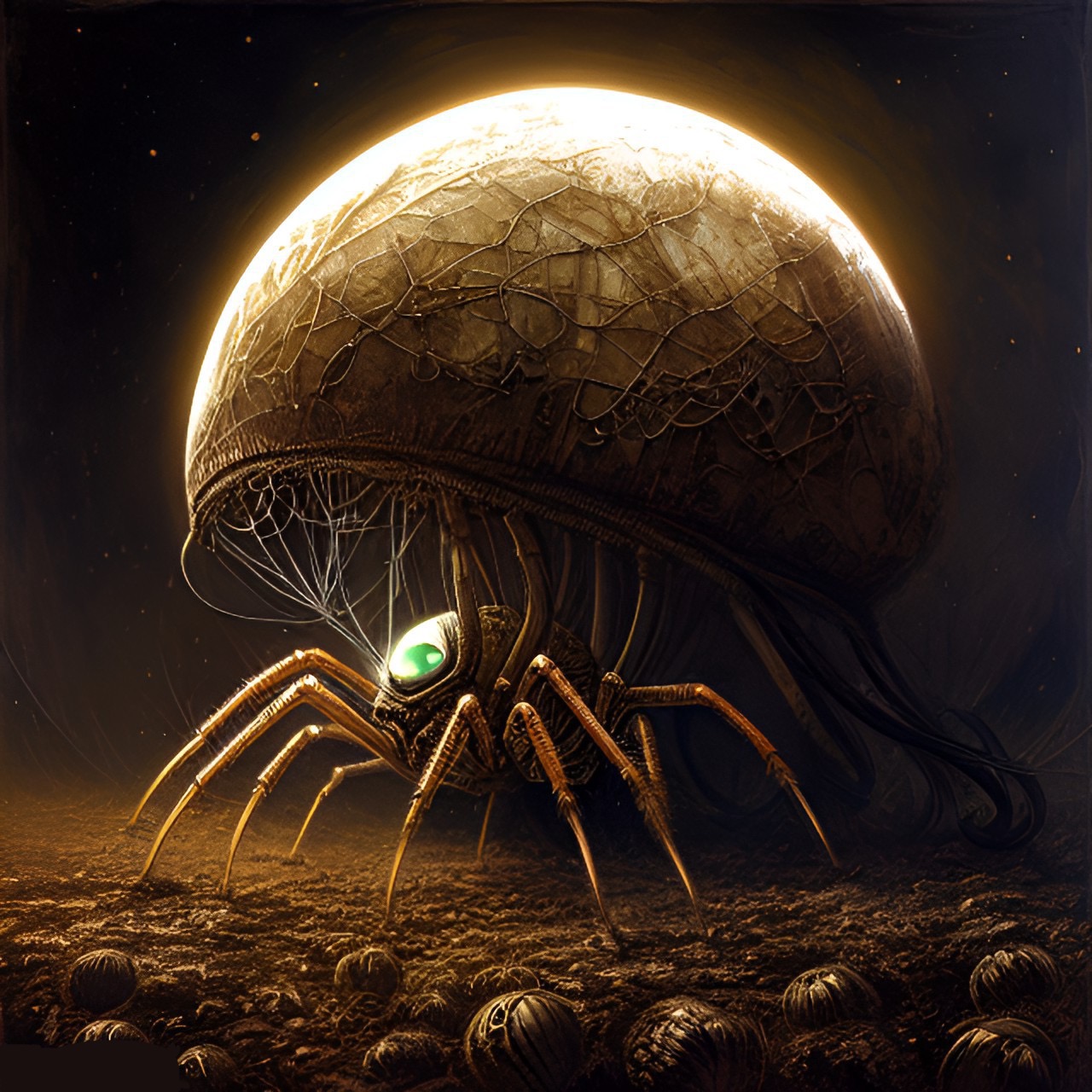Shrik (Sh-r-ick)
Alternative names: Shell Spider, Helmet Bug
Basic Information
Anatomy
These spider-like creatures have 10 legs, one central green eye, and a large skeletal shell that is usually suspended above them by 6 arm-like appendages that are fixed both to the torso of the creature as well as the inside of the shell. They have no head or abdomen, the eyes and jaw simply emerging from their torso. Their many small teeth are prefect from shredding bugs or tearing off small bits of meat. Their shells are very moist and slimy on the underside due to these bugs using them to store moisture and also for shade from the harsh sun of their preferred desert environment. In the event of a sandstorm or especially hot day (or just to sleep), they lower their shells over their entire bodies, drawing their legs inside and sealing themselves off from their surrounding environment. When on rocky surfaces, slime from their shell lining will solidify into a sort of glue between the edges and the rock, allowing them to stick themselves to any surface, especially in their chosen nest/den locations of caves.
Genetics and Reproduction
Shriks accumulate hundreds of eggs on the underside of their shells, eventually laying them one by one on the floor, walls, and even ceiling over their cave nests. The shell of these eggs quickly hardens and eventually becomes the shell of the new Shrik, growing with the bug just like the rest of their body.
Ecology and Habitats
Hot desert environments are where these creatures usually reside, which is interesting as they seem to prefer caves and more cool environments for laying their eggs and making their nests and dens. They emerge from these dens often for several days to hunt and gather food before returning.
Dietary Needs and Habits
Shriks most often hunt other species of bugs or other such common prey, but have also been commonly seen acting as carrion eaters, scavenging meat from larger creatures that have previously been killed or died.
Additional Information
Domestication
Some keep Shriks as pets, usually confined in a tank due to their capability to cause damage with their sharp teeth. People do sometimes remove their teeth and allow them to roam around freely, but some consider this to be inhumane.
Geographic Origin and Distribution
Shriks are originally from the deserts of Sauria, but have spread to other desert worlds as well due to several instances of them mistaking the cool, shadowed storage bays of ships for caves.



Comments